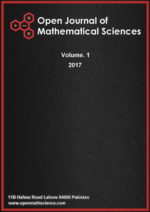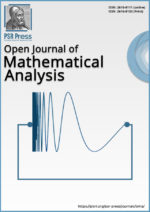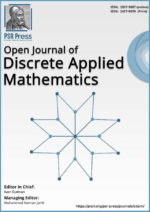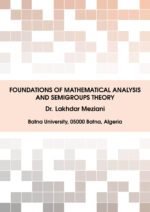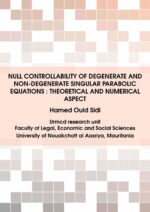Ptolemy Scientific Research Press (PSR Press)is a highly regarded publisher of scientific literature dedicated to bringing the latest research and findings to a broader audience. With a focus on cutting-edge research and technology, Ptolemy Scientific Research Press offers a range of publications catering to professionals, researchers, and student’s needs. Whether looking for information on the latest breakthroughs in physics, biology, engineering, or computer science, you can trust Ptolemy Scientific Research Press to deliver insightful, accurate, and engaging content. With its commitment to quality, accessibility, and innovation, Ptolemy Scientific Research Press is an essential resource for anyone interested in science and technology.

Latest Published Articles
EASL-Vol. 4 (2021), Issue 1, pp. 77 – 79 Open Access Full-Text PDF
Sudhanshu Aggarwal
Abstract: Nowadays, scholars are very interested to determine the solution of different Diophantine equations because these equations have numerous applications in the field of coordinate geometry, cryptography, trigonometry and applied algebra. These equations help us for finding the integer solution of famous Pythagoras theorem and Pell’s equation. Finding the solution of Diophantine equations have many challenges for scholars due to absence of generalize methods. In the present paper, author studied the exponential Diophantine equation \((2^{2m+1}-1)+(13)^n=z^2\), where \(m,n\) are whole numbers, for its solution in whole numbers. Results show that the exponential Diophantine equation \((2^{2m+1}-1)+(13)^n=z^2\), where \(m\), \(n\) are whole numbers, has no solution in whole number.
OMS-Vol. 5 (2021), Issue 1, pp. 147 – 161 Open Access Full-Text PDF
Soh Edwin Mukiawa
Abstract: In the present work, we study the effect of time varying delay damping on the stability of a one-dimensional porous-viscoelastic system. We also illustrate our findings with some examples. The present work improve and generalize existing results in the literature.
OMS-Vol. 5 (2021), Issue 1, pp. 128 – 146 Open Access Full-Text PDF
Gratien Twagirumukiza, Edouard Singirankabo
Abstract: None can underestimate the importance of mathematical modelling for their role in clarifying dynamics of epidemic diseases. They can project the progress of the disease and demonstrate the result of the epidemic to public health in order to take precautions. HIV attracts global attention due to rising death rates and economic burdens and many other consequences that it leaves behind. Up to date, there is no medicine and vaccine of HIV/AIDS but still many researches are conducted in order to see how to mitigate this epidemic and reduce the death rate or increase the life expectancy of those who are infected. A delayed HIV/AIDS treatment and vertical transmission model has been investigated. The model took into account both infected people from the symptomatics group and asymptomatic group to join AIDS group. We considered that a child can be infected from the mother to an embryo, fetus or childbirth. Those who are infected, it will take them some time to get mature and spread the disease. By using mathematical model, reproduction number, positivity, boundedness, and stability analysis were determined. The results showed that the model is much productive if time delay is considered.
EASL-Vol. 4 (2021), Issue 1, pp. 69 – 76 Open Access Full-Text PDF
Anwar Hussain, Muhammad Izhar, Mian Azhar Uddin, Muhammad Wahab, Anwar Ali Khan, Masood Rauf Khan
Abstract: We theoretically present the physical realization of one dimensional (1D) atom localization by superposition of three standing wave fields in a four-level tripod atomic configuration. The most interesting result that we observe is the variation of the bandwidth of the localization peaks with the intensity of the space independent Rabi frequency. A sharp single and double localized peaks are observed at different direction of the wave numbers. The bandwidth of a localized peak is reduced as the intensity of the space independent Rabi frequency goes on increasing, which corresponds to the reduction in the uncertainty. These results will hopefully contribute to the development of current high tech-applications.
OMS-Vol. 5 (2021), Issue 1, pp. 115 – 127 Open Access Full-Text PDF
Van Thien Nguyen, Viet Kh. Nguyen, Pham Hung Quy
Abstract: Let \((a, b, c)\) be a primitive Pythagorean triple parameterized as \(a=u^2-v^2,\ b=2uv,\ c=u^2+v^2\), where \(u>v>0\) are co-prime and not of the same parity. In 1956, L. Jeśmanowicz conjectured that for any positive integer \(n\), the Diophantine equation \((an)^x+(bn)^y=(cn)^z\) has only the positive integer solution \((x,y,z)=(2,2,2)\). In this connection we call a positive integer solution \((x,y,z)\ne (2,2,2)\) with \(n>1\) exceptional. In 1999 M.-H. Le gave necessary conditions for the existence of exceptional solutions which were refined recently by H. Yang and R.-Q. Fu. In this paper we give a unified simple proof of the theorem of Le-Yang-Fu. Next we give necessary conditions for the existence of exceptional solutions in the case \(v=2,\ u\) is an odd prime. As an application we show the truth of the Jeśmanowicz conjecture for all prime values \(u < 100\).
OMS-Vol. 5 (2021), Issue 1, pp. 101 – 114 Open Access Full-Text PDF
Silvia Foschi, Daniele Ritelli
Abstract: One of the problems on which a great deal of focus is being placed today, is how to teach Calculus in the presence of the massive diffusion of Computer Algebra tools and online resources among students. The essence of the problem lies in the fact that, during the problem solving activities, almost all undergraduates can be exposed to certain “new” functions, not typically treated at their level. This, without being prepared to handle them or, in some cases, even knowing the meaning of the answer provided by the computer system used. One of these functions is Lambert’s \(W\) function, undoubtedly due to the elementary nature of its definition. In this article we introduce \(W\), in a way that is easy to grasp for first year undergraduate students and we provide some general results concerning polynomial-exponential and polynomial-logarithmic equations. Among the many possible examples of its applications, we will see how \(W\) comes into play in epidemiology in the SIR model. In the second part, using more advanced concepts, we motivate the importance of the Implicit Function Theorem, using it to obtain the power series expansion of the Lambert function around the origin. Based on this approach, we therefore also provide a way to obtain the power series expansion of the inverse of a given smooth function \(f(y)\), when it is assumed that \(f(0)=0,\,f'(0)\neq0\), aided by the computational power of Mathematica®. Basically, in this way, we present an alternative approach to the Lagrange Bürman Inversion Theorem, although in a particular but relevant case, since the general approach is not at an undergraduate level. A number of good references are [1, pp. 23-28] and [2], where the Lambert function is applied. Finally, these skills are used to take into consideration the particular quintic equation in the unknown \(y\) presented by F. Beukers [3]. Namely, we consider \(x(1+y)^5-y=0\) as an example of an equation for which the power series representation of one of its real solutions is known, calculating, with the same method used for the Lambert function, the first terms of its power series representation.

